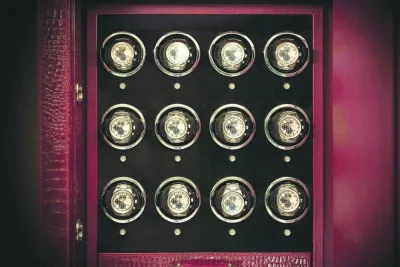|
Virgin Galactic’s first commercial spacecraft crashed yesterday during a test flight over California, scattering debris over the desert and leaving at least one pilot dead, officials said. |
Television images showed the wreckage of SpaceShipTwo, a test vehicle that flies to the edge of space, amid brush in the desert east of Mojave, a few hours’ drive northeast of Los Angeles.
The incident is second disaster involving a US spacecraft this week, after an unmanned Orbital Science rocket carrying supplies to the International Space Station exploded after launch on Tuesday.
It is also a huge blow to British tycoon Richard Branson’s long-held dream of offering the first commercial space flights.
The Virgin chief made no immediate comment on the accident.
“During the test, the vehicle suffered a serious anomaly resulting in the loss of SpaceShipTwo. Our first concern is the status of the pilots,” the firm said in a tweet.
Virgin Galactic said the fate of the pilots was unknown but the California Highway Patrol confirmed reports that one pilot had died another was serious injured, and taken to hospital.
“We will work closely with relevant authorities to determine the cause of this accident and provide updates as soon as we are able to do so,” Virgin said.
The spaceship had been carried aloft on a bigger aircraft known as WhiteKnightTwo and then released for a test of its rocket engine above the Mojave desert, in what was the 35th such flight.
The spaceship is carried to an altitude of about 45,000 feet and released.
The spaceship then fires its rocket motor to catapult it to about 62 miles (100km) high, giving passengers a view of the planet set against the blackness of space and a few minutes of weightlessness.
“SpaceShipTwo has been released by WhiteKnightTwo, and is now flying freely,” the firm wrote in a blow-by-blow account of the flight, adding: “Ignition! SpaceShipTwo is flying under rocket power again.”
The next tweet announced the “anomaly”, followed by the series confirming the crash. The company added that WhiteKnightTwo had landed safely after the accident.
More than 500 people have already reserved seats – and paid a deposit on the $200,000 ticket price – for a minutes-long suborbital flight on SpaceShipTwo, which can carry six passengers.
It is the commercial version of SpaceShipOne, the first private spacecraft to reach the edge of space in 2004, and which is now on display at the National Air and Space Museum in Washington.
Private companies are rushing to fill the gap left by Nasa, which ended its 30-year shuttle programme in July with the completion of the final Atlantis mission to the International Space Station (ISS).
Yesterday’s incident is the second involving a space craft this week, after the Orbital Science rocket exploded six seconds after launch on a resupply mission to the ISS.
Initial investigations into that explosion centred on the pair of rocket engines providing its thrust, which were made during the Soviet era and had been refurbished.
The Ukrainian-designed AJ-26 engines date back to the 1960s and 1970s, and Aerojet Rocketdyne of Sacramento, California has a stockpile that it refurbishes for Orbital Sciences.
The spaceship is based on a prototype, called SpaceShipOne, which 10 years ago won the $10mn Ansari X Prize for the first privately developed manned spacecraft to fly in space.
Yesterday’s test was to be the spaceship’s first powered test flight since January.



